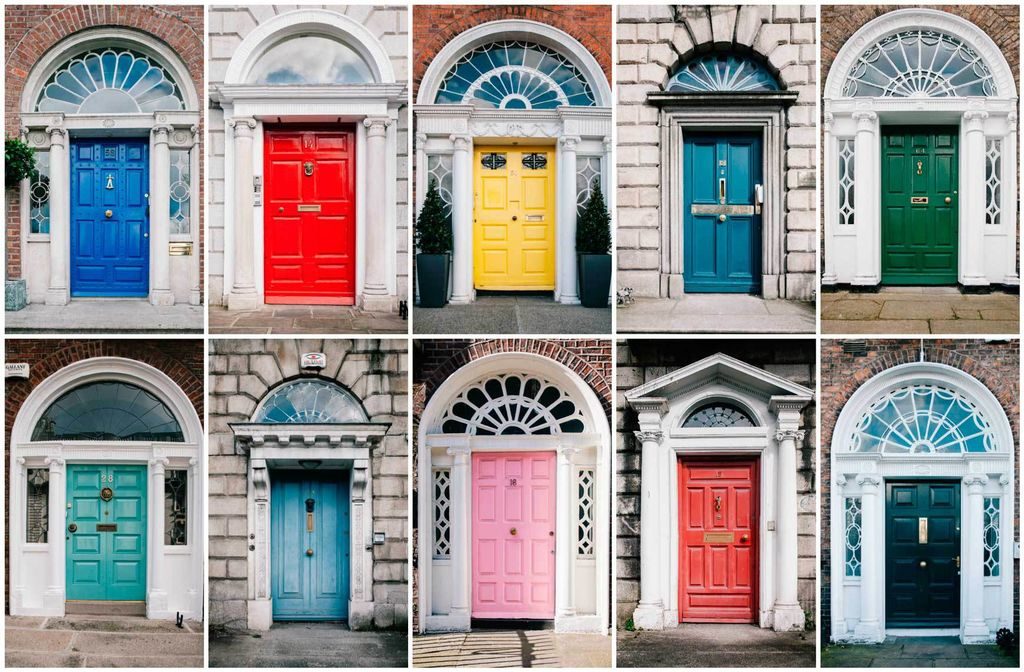
photo by Google Images
If you think of Ireland, you would probably think of fantastic landscapes, endless drinking and a leprechaun sitting atop a rainbow. Yet the overwhelming characteristic of Ireland is its dull, grey weather. Walking around Dublin, it’s hard to ignore how grey the city is, right from its concrete structures to the sky, which limits the sunshine even in peak summer. And then suddenly, in the midst of all this grey, you come across a building with a candy lilac door. Look around, and you start seeing the colours. Another door is bright red, the one after a soothing, pale pink.
It doesn’t take long to realize that the main doors of buildings are painted in different colours. While this is true across the city, it is particularly prominent at Fitzwilliam Square, the nearby Merrion Square and St Stephen’s Green, which were home to the elite of Dublin, including poets like W.B. Yeats, Oscar Wilde and the geologist Sir Richard Griffith. Today, these Georgian townhouses serve as offices of solicitors and insurers, still the cream of Dublin’s society.
The Georgian architecture of the Fitzwilliam and Merrion squares makes the colourful doors stand out even more. This style of architecture was prevalent from 1714-1830, from the reign of King George I to King George IV. Dublin’s Georgian squares are characterized by symmetrical townhouses of dull, reddish-brown bricks, with a little staircase at the door, and white pillars on either side. The townhouses are lined up side by side, each the same height, with similar, equidistant windows. This symmetry was mandated by the building regulations.
The pops of colour break the uniformity, especially since the shades seem to have no pattern other than the owner’s whim. The doors range from merry purple to subtle pink, lemon yellow, striking turquoise and deep grey to hot pink, and every other colour in between. No two adjacent doors have the same colour.
Many legends explain this tradition but my favourite is the one that involves Queen Victoria. Ireland was colonized by the English and when Queen Victoria, nicknamed the “famine queen” in Ireland, died, the Irish were told to paint their doors black in mourning. In rebellion, they painted them in bright colours. It’s likely this story has no basis in truth and is meant merely to extol Irish defiance, but that doesn’t make it any less charming.
Another popular theory about the colourful doors involves writers George Moore and Oliver St John Gogarty, both of whom are said to have had a huge influence on James Joyce’s work. According to the story, Gogarty would return home drunk from the pub each night and end up knocking on his neighbour Moore’s door instead of his own. Annoyed, Moore painted his door green so that even a drunk Gogarty might be able to distinguish between the two. The trend caught on and residents started painting their doors in different colours to give their houses a distinct identity.
Even the accessories on these doors became a creative outlet. Many doors have old-fashioned knobs, intricate brass-door knockers and letterboxes ranging from a sphinx to lion-face designs. Yet the doors only became famous, and turned into a cultural icon of Dublin, when a New York-based advertising professional visiting the city in 1970 decided to display the doors in a collage. The picture, displayed at the Irish tourism office, quickly became a popular, award-winning poster. Souvenir shops sell postcards and fridge magnets of the iconic doors.
To me, these doors are a symbol of something greater, a personification of the Irish spirit itself. In a country where the persistent rain and grey sky can dampen even the most cheerful spirit, the colourful doors are a statement of bravado. Like the lively pubs and spirited music, these doors remind you to smile through the day, come what may.
https://www.livemint.com/mint-lounge/features/why-do-dubliners-paint-their-doors-1569579687205.html

